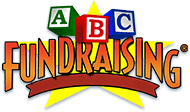How to Enhance Your Nonprofit’s Digital Fundraising Strategy

How to Enhance Your Nonprofit’s Digital Fundraising Strategy
Fundraising online allows you to reach a larger audience of supporters than your nonprofit could through traditional means alone. However, the same fundraising strategies that work well face-to-face need some adjustments to translate well to virtual platforms. There are many fundraising strategies that are unique to online spaces, and it can take time to refine and master your approach.
To focus on your digital fundraising efforts, there’s no need to throw away your traditional fundraising ideas, but instead treat them as additional tools to your new digital ones. Many of the most effective fundraising strategies combine digital and traditional approaches to reach supporters in new and creative ways.
Whether or not your nonprofit currently has a digital strategy, your approach can always be further refined to make the most of your time and resources. To help your nonprofit prepare for and improve its digital fundraising strategies, this article will explain how to:
- Optimize Your Donation Form
- Make the Most of Social Media
- Leverage Matching Gifts
- Build Personal Connections
These four tips are ways you can improve the success of your campaigns, but remember that the heart of any fundraising campaign is your nonprofit’s own creative content and planning. You can spread the word to an online audience, but be sure you always have something interesting and important that’s worth getting the word out for.
Optimize Your Donation Form
Many of the best nonprofit websites are already equipped to tackle a virtual campaign. However, there’s no need to fear if yours still needs work. As part of your website, your online donation form is the most important part of your digital fundraising strategy as everyone who makes a digital donation will have to visit it. Unfortunately, poorly designed donation forms can turn away donors who were prepared to give.

Morweb’s tips on donation page design provide insight into how donation pages can cause donors to either complete or inadvertently abandon their donations:
- Branding. To encourage users to submit their gifts, you need to assure them that their contribution is going to your nonprofit. Place your logo at the top of every page on your website, including your donation page, to create a consistent user experience for donors.
- Minimalist Design. Too many visual elements can be distracting, especially on a donation form where you want users to focus on finishing the task at hand. Limit the number of information fields to include only necessary questions to keep your form short and easy to complete.
- Mobile Optimization. One in four donors completes their charitable gift from their phone. To accommodate these donors, make sure your donation form functions on different devices and screen sizes. Preview all of your pages for mobile screens, and be on the lookout for elements that may cause slow loading times such as too many images.
In addition to your donation form, you can apply these principles to the rest of your website. Consistently branded, mobile-friendly websites appear professional and let users know that the organization behind them is healthy and worth donating to.
Make the Most of Social Media
Social media is becoming an increasingly popular choice for nonprofits to reach supporters. However, while it has a low monetary investment cost, it can quickly become an ineffective time sink if not properly managed.
The term “going viral” gets tossed around a lot, but actually creating a successful social media post is easier said than done. While the internet has a wide audience for your nonprofit to reach, it can be difficult to make your nonprofit stand out from the crowd.

Not every social media platform is optimized for nonprofits to succeed, but you can make the most of different platforms by understanding their unspoken rules and effectively playing into them. Here’s an overview of three of the most popular social media platforms and how to use them:
- Facebook. People using Facebook tend to scroll through their timelines quickly, stopping only when something catches their attention. Your nonprofit can find success for its longer form content on Facebook by starting off posts with an eye-catching visual that ties into your story, research, or news you want to share.
- Instagram. Instagram favors pictures and other visuals. You might first assume that your nonprofit only has a limited number of high-quality photos to share, but you can use Instagram’s hashtags to make the most of the pictures you do have and encourage your supporters to help. For example, if your nonprofit sells merchandise like travel mugs or the currently in-demand face masks, you can ask supporters to post pictures of themselves with your merchandise with your nonprofit’s hashtag to generate additional interest in your organization.
- Twitter. Twitter is often the most difficult platform for nonprofits to use. Twitter’s algorithm favors new content and high levels of engagement such as retweets, replies, and likes. This makes it an effective platform for quick news updates on your current fundraisers and programs, rather than a place to post expert content or emotional appeals.
Be sure that your social media profiles also link to your website and vice-versa. You can even encourage additional interaction with your social media accounts by embedding a social media feed into your news page on your website. This can also save your marketing team the work of maintaining an active news page in addition to your social media profiles.
Leverage Matching Gifts
Securing donations can be difficult, so be sure that you are making the most of each contribution with matching gifts. Matching gifts are additional donations made by corporations that employ your donors. When someone who works for a company with a matching gift program donates, they can fill out the proper forms to request that their employer also make a donation, usually at a dollar-for-dollar rate.

Unfortunately, matching gifts aren’t something your nonprofit can sit back and enjoy while the donations roll in. According to Double the Donation’s guide to matching gifts, 78% of eligible donors have no idea if their employers offer matching gift programs. This means that if you want to make the most of matching gifts, your nonprofit will need to educate donors about matching gifts.
You can start teaching your donors about matching gifts by taking the following steps:
- Have information on your website. Your website likely already contains a page explaining the impact of each donation on your mission, and if it doesn’t, consider adding one. Places like this are a natural way to encourage donors to increase their support by looking into their company’s matching gift programs. Add background information explaining what matching gifts are and include a search tool that allows donors to search for their companies’ program.
- Reach out through email. If your nonprofit is a bit behind on discovering matching gifts, it’s not too late to obtain them from your old and current donors. You can get the message across to your entire support base with your newsletter. For direct outreach, consider doing a bit of research into matching gift programs, so you can contact supporters who are the most likely to qualify.
- Ask about matching gift eligibility on your donation form. During the donation process itself, inform donors about the option to make a matching gift. Matching gift software can assist you here by creating information fields that ask donors to enter their place of work, then automatically directing them to the proper forms to fill out.
Donors tend to be receptive to information and matching gifts. Double the Donation has also found that 84% of donors say they would be more likely to give if they qualified for a matching gift program. This means that when you successfully build awareness for matching gifts, your nonprofit can increase its current donations and potentially attract new donors as well.
Build Personal Connections
Sometimes online communication can feel sterile or impersonal, especially due to the lack of face-to-face interaction. Organizations such as schools miss out on some of their most useful methods of fundraising as younger students should have limited access to communicating with strangers online.
This doesn’t mean your school can’t still reach its community or make personal connections with donors. Like any other nonprofit organization, schools can design engaging websites like the examples on this page and use online spaces to continue fundraising.

Even while socially distanced, you can build personal connections with supporters by doing the following:
- Communicate specific impacts. Donors give because they want their contributions to make a difference. You can communicate their impact by letting donors know what initiatives their support helped accomplish and what the results of those initiatives were. For example, you can communicate the amount of art supplies your school was able to obtain with their donations or discuss how it meaningfully contributed to a large project such as constructing a new building.
- Personalize your outreach. When you address donors, refer to them by their name, so your nonprofit is acknowledging each one as an individual. You can also reference their past support such as previous donations or participation in events to show that you see and appreciate all of their contributions, while creating a unique communication experience.
- Tell an emotional story. Many donors tend to be moved by their emotions first and facts second. Even if you’re not there to deliver it in person, you can still relay emotional appeals and anecdotes from your constituents through email appeals and testimonials on your website. Combine your stories with photographs to help donors develop a personal connection with the cause their donations will go to support.
Though it may seem counterintuitive, online outreach sometimes makes it easier to create personal connections. While you can’t speak to donors one-on-one, you can use your donor database or CRM to track all of their interactions with your nonprofit. Then, you can use that information to tailor each piece of communication you have with them to best reflect their interests and motivate them to continue supporting your nonprofit.
The Gist
Like any fundraising strategy, digital fundraising requires experimentation to find communication and outreach methods that best resonate with your audience. If your nonprofit ends up encountering any challenges, don’t be afraid to reach out to experts in both fundraising and web services to get advice on your current efforts.

Author Biography
Murad Bushnaq is the Founder and CEO of Morweb. Since its inception in 2014, Murad has acted as Creative Director and Chief Technologist to help nonprofits spread their vision online through engaging design, intuitive software and strategic communication.

 FREE INFO-KIT
FREE INFO-KIT


